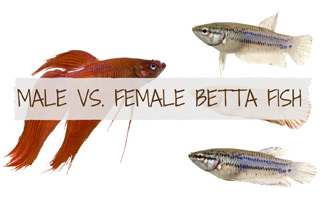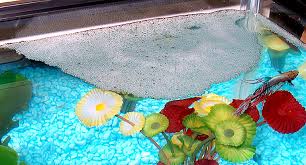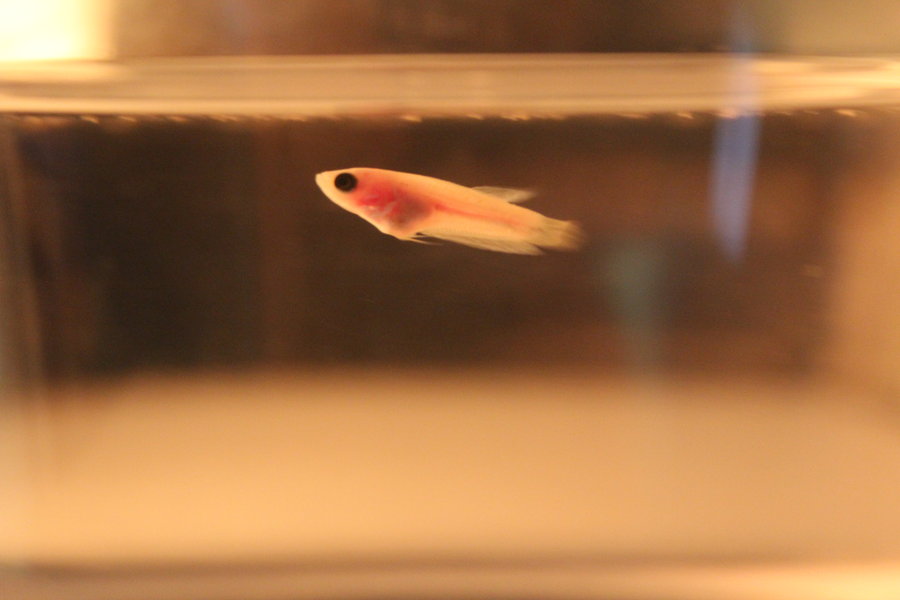Male Betta Fish
Male betta fish are typically more ornate and decorated when compared to their female counterparts. For example, consider the pair below:

The male betta fish is seen on the left, with much larger fins and more elaborate colors. The female betta fish is on the right, with more dull colors. He is typically larger than his female counterpart.
Keep Male Betta Fish Separate!

Unlike female betta
fish, male betta fish CANNOT live together comfortably in
the same tank. If they live together, male betta
fish will become aggressive and fight. This is how
they earned their nickname, "fighting fish." The
males will fight to the death if given the chance, so they
should never be placed together in a tank.
Bubble Nests

When a male betta fish is ready to breed, he will create a bubble nest. These bubble nests will float on the very top of the tank, and appear like a cluster of small bubbles. Once made, male betta fish will often stay under the nest as they wait for a female to mate with. After eggs are laid, male betta fish will place the eggs into the bubble nest using their mouths.
The bubble nest allows for a clean, moist, and oxygen rich environment for the baby betta fish. The male betta fish will stay under the nest and protect the eggs from any potential predators. If any eggs fall out, he will place them back in.
Hatching Baby Bettas
Male betta fish will place the eggs into a bubble nest, which he will create. The baby betta fish will hatch in about three days. As they hatch, male betta fish will watch and remain under the bubble nest, catching any eggs that fall out. Once hatched, the babies are called "fry" and are very tiny. Neither parent will care for the babies - they will find their own food as they grow.
